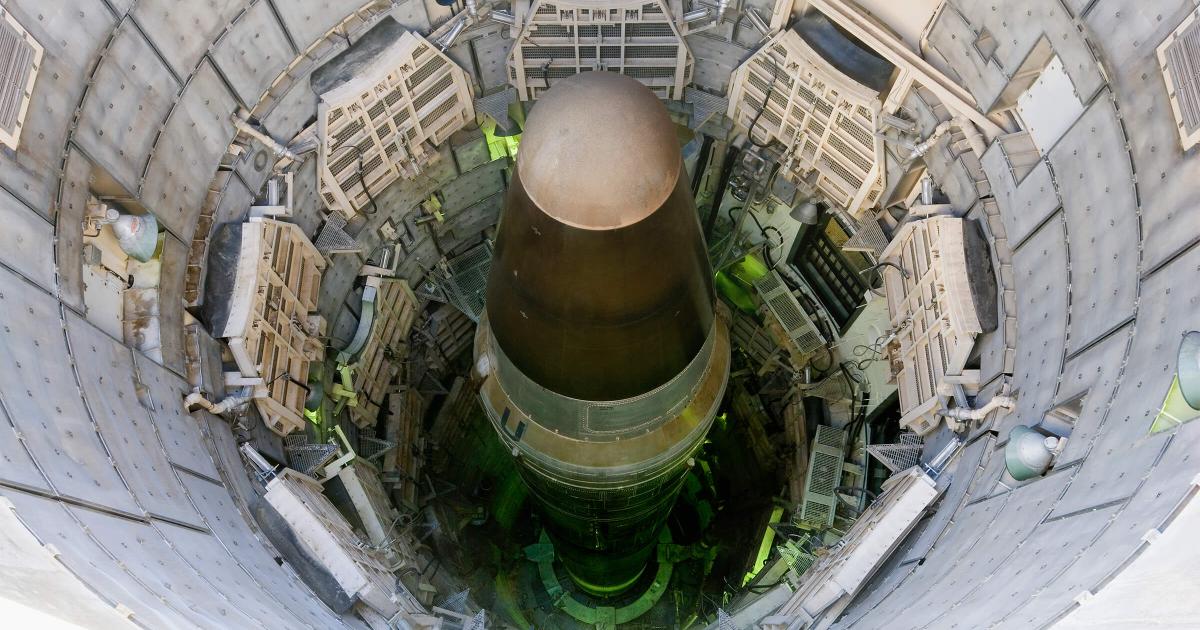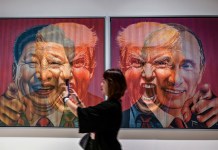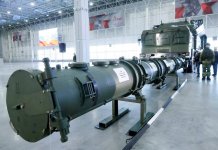The threat of nuclear weapons has been looming over Europe since the onset of the Ukraine-Russia conflict.
President Vladimir Putin has threatened to push the nuclear button whenever Russia is on the back foot. Recently, he lowered the threshold for his country to use atomic weapons, even against ‘non-nuclear states’ aided by nuclear states.
At the same time, Ukrainian President Volodymyr Zelensky has also drawn another nuclear-horror scenario that can unfold. He cautioned the world leaders at the UN General Assembly in New York that Russia is planning to attack Ukrainian nuclear power plants and disconnect them from the energy grid.
“Radiation does not respect state borders,” Zelensky said in his address. Since Russia “can’t defeat our people’s resistance on the battlefield,” Zelensky said Russian President Vladimir Putin is “looking for other ways to break the Ukrainian spirit.”
The question remains whether Russia is doing sabre rattling with a blunt sword and if Moscow will blow up Ukrainian nuclear power plants without worrying about the nuclear radiation.
Experts feel that even though it could be just a bluster from the Russian patriarch, the consequences of using nuclear weapons could be devastating for the country.
Asian NATO: Why India Does Not Back Japan’s Idea Despite Tensions With China & Alliance With Tokyo?
But, the vague definition of Russian red lines also makes the situation ‘dicey.’ The West has breached the threshold of Russian red lines many times as it gave tanks and F-16s to Ukraine without Russia going nuclear.
Russia has the largest nuclear stockpile in the world. According to the Federation of American Scientists, Russia has a whopping 5,977 nuclear warheads – the devices that can trigger a nuclear explosion.
F-16s “Sitting Ducks” For Russian MiG-31 Fighters? Putin Warns Of Consequences Over Fighting Falcons
The number also includes about 1500 warheads set to be retired and dismantled. The remaining 4,500 are strategic nuclear weapons that can be delivered through ballistic missiles or rockets to unleash the horror of atomic weapons.
In comparison, the US has 5,943 and China has 350 warheads. Even the smallest of warheads can cause major destruction of life and property, and the consequences will be borne by generations to come. The bomb that killed up to 146,000 people in Hiroshima, Japan, during World War Two was 15 kilotons. And nuclear warheads today can be more than 1,000 kilotons.
The 71-year-old Kremlin Chief Putin, who decides whether Russia uses its nukes or not, has upped the proverbial nuclear ante as the US and Britain deliberate whether or not to permit Ukraine to fire conventional Western missiles into Russia. Ukrainian President Volodymyr Zelensky has asked the West to let the country use long-range US ATACMS and British Storm Shadows into Russian territory.
ATACMS Does What Storm Shadow Missiles Could Not — Sink A Russian Kilo-Class Submarine: UK MoD
“It is proposed that aggression against Russia by any non-nuclear state, but with the participation or support of a nuclear state, be considered as their joint attack on the Russian Federation,” Putin said. Moscow would consider going nuclear if it detected the start of a massive launch of missiles, aircraft, or drones against it.
“Nuclear weapons are solely for deterrence. However, the conventional war for Russia in Ukraine has been challenging. States are also looking at nuclear weapons as warfighting weapons, given the technological advancements made in delivery systems. But Russia would still want to refrain from using them as they would know the overall consequences of such weapons being used,” Indian scholar on nuclear missiles, missile defense, and artillery Debalina Ghoshal, author of ‘Role of Ballistic and Cruise Missiles in International Security’ told the EurAsian Times.

The protracted Ukraine-Russia war has been the gravest confrontation between Russia and the West since the 1962 Cuban Missile Crisis. The missile crisis was the closest that the two countries came to the brink of nuclear war.
“Now Russia wants to use nuclear weapons even against conventional missile strikes against it. This is going to be very dicey. Even though the nuclear weapon states are backing Ukraine, there is no use of nuclear weapons,” Ghoshal said.
Talking about the constant ‘Red Lines’ that the Kremlin keeps referring to is quite vague. “But here the issue is the perfect definition of ‘Red Line’ for Russia’s use of nuclear weapons is not yet clear even though the circumstances under which it will be used is specified,” Ghoshal added.
Russian MoD Says European Ammo Ship Destroyed In Iskander Missile Attack In Ukraine’s Port Of Yuzhny
In March 2023, Russia said it would deploy tactical nuclear weapons to Belarus, the first of which arrived in June 2023. This is the first time that Russia has deployed nuclear weapons outside of the country since the collapse of the Soviet Union. While not a direct violation of the Nuclear Non-Proliferation Treaty, some have argued that, like NATO nuclear sharing agreements, the decision is against the spirit of the NPT.
Exclusive: How Indian MiG-21s Thrashed F-15 Eagles During Military Drills, Shocking USAF Pilots
India has also warned Russia about the possible use of nuclear weapons in Ukraine, calling the prospect one that “goes against the basic tenets of humanity.”
In a Congressional hearing on May 4, 2023, the US Director of National Intelligence, Avril Haines, said it remained “unlikely” that Russia would resort to nuclear weapons.
Since Russia’s February 2022 invasion of Ukraine, Russian President Vladimir Putin has threatened to use nuclear weapons against the West and declared the suspension of certain Russian obligations under the New START Treaty that limit US and Russian strategic nuclear forces.
Russian forces have rehearsed using tactical nuclear weapons at an early stage of conflict with a major world power, according to leaked Russian military files that include training scenarios for an invasion by China. The classified papers leaked in February 2024 describe a threshold for using tactical nuclear weapons that is lower than Russia has ever publicly admitted.
The cache consists of 29 secret Russian military files drawn up between 2008 and 2014, including scenarios for war gaming and presentations for naval officers, which discuss operating principles for the use of nuclear weapons. Criteria for a potential nuclear response range from an enemy incursion on Russian territory to more specific triggers, such as the destruction of 20 percent of Russia’s strategic ballistic missile submarines.
Russia’s tactical nuclear weapons, which can be delivered by land or sea-launched missiles or from aircraft, are designed for limited battlefield use in Europe and Asia, as opposed to the larger “strategic” weapons intended to target the US.
Putin said last year that Russian nuclear doctrine allowed two possible thresholds for using nuclear weapons: retaliation against a first nuclear strike by an enemy and if “the very existence of Russia as a state comes under threat even if conventional weapons are used.”




